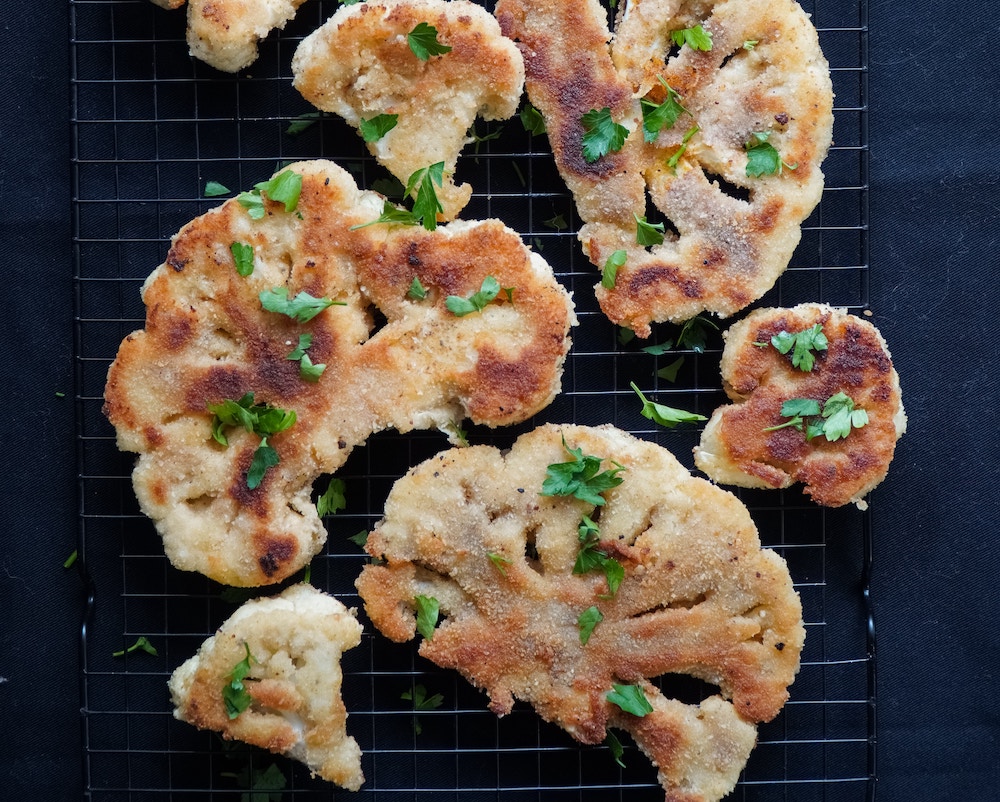The growing popularity of the paleo diet and “ancestral health” movement reveals that many people are frustrated with the offerings on the shelves of modern grocery stores. While this is understandable, it seems like there are some serious misconceptions about what our ancestors, Homo erectus, actually ate two million years ago during the Paleolithic era—and their diet is probably nearly impossible for most of us to replicate today.
What can you eat on a paleo diet? Proponents of this diet recommend stocking up your kitchen with lean cuts of meat, meat from game animals like bison and venison, eggs, fish, shellfish, fruit, non-starchy vegetables, nuts, leafy greens, seeds, coconuts, avocados, and certain oils like olive, walnut, and coconut. They say that people should avoid all dairy, grains, legumes, starchy vegetables, sweets, processed and cured meats, and any highly processed foods. Supposedly, the paleo diet consisted primarily of hunted meat and seafood, with high amounts of saturated fat, and a small amount of plants that were gathered.
However, there are quite a few holes in these theories. First of all, anthropologists have found that our paleo era ancestors were likely eating 100 grams or more of fiber per day—which would be practically impossible with a diet that consisted primarily of meat. People have to eat lots of calories of plant foods in order to consume that much fiber.

While there definitely exceptions, like early Inuit populations in the Arctic that hunted seals, whales, and fish for the vast majority of their calories, most early humans ate mainly vegetarian diets with a small amount of meat. While grains are often criticized by fans of paleo, human beings have actually been consuming grains for 100,000 years, before depending on agriculture—that’s enough time for our digestive systems to adapt. And perhaps early humans were able to consume higher amounts of saturated fats without suffering ill effects because their lifestyles were so physically demanding. Hunter gatherers didn’t have sedentary desk jobs!
There are still a few remaining tribes that hunt and gather most of their food, and by staying with these tribes, anthropologists can learn more about how our ancestors ate. The Hadza of Tanzania are one of the world’s last tribes that rely entirely on hunting and gathering, and they get 70% of their calories from plants—their diet may be drastically different from the Inuits, but it just goes to show how varied our ancestors diets really were. For instance, people living in Europe, the Middle East, and North Africa needed to eat dairy to survive, while people in Southeast Asia, China, and the American Southwest didn’t—and today, their descendants are typically lactose intolerant. While the Jains in India eat strict vegetarian diets, people in coastal villages in Malaysia are almost completely dependent on seafood. Our ancestors’ diets depended on the climate, the time of year, and animal populations and migration patterns.
Our ancestors also dined on lots of fruits and vegetables that would be unrecognizable today. Because of selective breeding, modern tomatoes, corn, peaches, watermelon, bananas, eggplants, carrots, and even domesticated avocados look very different from their ancient ancestors and even have different nutritional profiles. We probably would not find these early versions of fruits and vegetables very appetizing today.
Despite the fact that the few remaining hunter-gatherer populations and those living in small, rural villages in developing countries are the only people eating similarly to their ancestors, the terms “primal,” “ancestral,” and “paleo” are now a common sight on food labels. However, these labels are little more than a marketing gimmick designed to draw in consumers who are interested in moving away from ultra processed foods and eating healthier.
Nowadays, you can find everything from sesame ginger salad dressing to chocolate collagen protein powder to chipotle lime mayonnaise sporting a “primal” or “paleo” label. While our ancestors did eat a wide variety of foods, it’s safe to assume that early humans weren’t downing pre-workout shakes with extra collagen or dipping their gathered vegetables in mayo made with avocado oil. Interestingly enough, olive oil is heavily emphasized in the paleo diet—but people did not begin making olive oil until around 6,000 BC, centuries after the paleo era came to an end.
So, is it really possible to eat like our Paleolithic ancestors? Well, for the most part, no. But the good news is that you don’t have to. Following the guidelines to eat plenty of whole, unprocessed plant foods, drinking lots of water, getting enough sleep, and prioritizing exercise are the most important components of a healthy lifestyle. If you want to take it a step further, do your best to eat organic, local, seasonal foods. We can learn a lot from our early ancestors—but we don’t need to eat exactly like they did in order to be happy and healthy.
What do you think about the paleo trend?
Also by Jane: Wake Up And Smell The Pumpkin! Elevate Your Self-Care Routine With These Fall Rituals
Will We Be Able To Travel On A Hotter Planet? How Climate Change Is Effecting Travel Industry
Get more like this—Subscribe to our daily inspirational newsletter for exclusive content!
__
Photo: Unsplash




